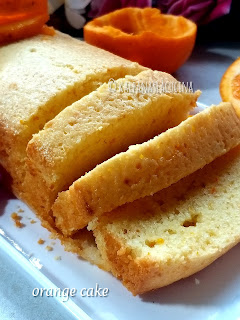With Holi around the corner, it's time for some fun and frolic ,which is simply incomplete without good food. Kanji is a popular Rajasthani drink that is generally made during the onset of summers or more appropriately during holi festival. It is fermented concoction made from mustard seeds, red chilli powder, hing and black salt. It is an absolutely lip curling drink and eat. Traditionally it is prepared in earthen pots, but any non reactive container like glass can be used. It takes 2-3 days time to get prepared. Moong dal is soaked, grind, beaten and then fried into fritters called vadas. These are then added to kanji to make kanji vada. It is kept for 5-6 hours before serving to absorb flavor of kanji. It’s a digestive drink and helps in keeping your stomach in perfect order. Tangy kanji vada comes to the rescue when you have eaten too many sweets on festivals and don't feel like eating anything else. So, after all that unhealthy snacking and munching, this kanji recipe can make perfect blend that promotes digestion !!
INGREDIENTS :
FOR making KANJI :
2 Litre Water
2 pinches of Asafoetida
1 teaspoon Turmeric Powder
1 teaspoon Red Chilli Powder
2 tablespoon Black Mustard Powder
1 teaspoon Salt
1/2 teaspoon Black Salt
1 tablespoon Mustard Oil
FOR making VADA:
1 Cup Yellow Moong Dal
1/2 Cup Urad Dal
Pinch Asafoetida
Salt to taste
Oil for frying
METHOD :
FOR making KANJI :
STEP 1- In a big food grade plastic / glass container, add asafoetida, turmeric powder, red chilli powder, black mustard powder, salt, black salt and mix everything really well.
STEP 2 - Add the said amount of water, mustard oil and mix it well.
STEP 3 - Close the container with a lid and keep aside for 3 days.
STEP 4 - Stir the kanji everyday with a clean and dry spoon.
Kanji tastes great on the fourth day when all spices mix to the water.
STEP 5 - Tangy-zingy and yummy kanji is ready.
FOR making VADAS :
STEP 1 - Clean moong and urad dal thoroughly and soak in water for 2-4 hours.
STEP 2 - Drain out the excess water later.
STEP 3 - Grind the soaked moong- urad dal in a mixture jar coarsely. Add 1-2 teaspoon water while blending if needed.
STEP 4 - Take out the dal in a mixing bowl and add salt and asafoetida to it.
STEP 5 - Whisk the dal paste well with your hands for 4-5 minutes until it turns light and fluffy. Colour of the dal mixture changes to white. (see notes ) I used an electric beater to make it more easy and fast.
STEP 6 - To check the batter is ready or not, take water in a small bowl and drop a tiny vada batter to it. If it floats then your batter is ready, if it sinks to the bottom then you need to whisk it for few more minutes.
STEP 7 - Heat enough oil in a wok or pan to deep fry the vadas. Drop a small vada to check if the oil is hot or not. If it comes out quickly then the oil is perfect.
STEP 8 - Wet your hand with water and drop little batter at a time in hot oil with your hands to make marble sized vadas.
STEP 9 - Place 8 to 10 vadas in oil at a time or as many as possible. Now deep fry the vadas till they get fluffy and golden brown from all sides.
STEP 10 - Drain out the fried vadas on paper kitchen towels to remove excess oil. Likewise, fry all the vadas and keep aside.
STEP 11 - Soak these hot fried vadas in lukewarm water with 1 teaspoon salt for 15-20 minutes and then squeeze out the excess water. (see notes )
STEP 12 - Keep the vadas aside.
STEP 13 - When the vadas are ready, put them into prepared kanji almost half an hour before serving.
HOW TO SERVE KANJI VADA :
STEP 1 - Place 4 to 5 vadas in a serving dish.
STEP 2 - Pour 3-4 spoons of kanji and ready to serve. If you like add some namkeen boondi on the top. But it's totally optional.
NOETS : * Here I have used both moong as well as urad dal, but you can prepare it only one dal too.
* Do not forget to whisk the dal mixture. It helps to make the vadas light and fluffy.
* You will see the colour changes to white after whisking.
* To check the vada batter is perfect or not - take water in a glass/ bowl.
* Drop a marble size mixture in it.
* If it floats then your batter is perfect. If it settled down to the bottom whisk the batter for some more time.
* One batch of vadas will take 4-5 minutes for frying.
* For soaking vadas always use lukewarm water with 1 teaspoon salt.
* After soaking vadas in water, remove and press in between your palms to squeeze out the excess water.
* If you are not going to serve the vadas immediately, keep these vadas in an air tight container and refrigerate it.
* Put them in kanji half an hour before serving.


































